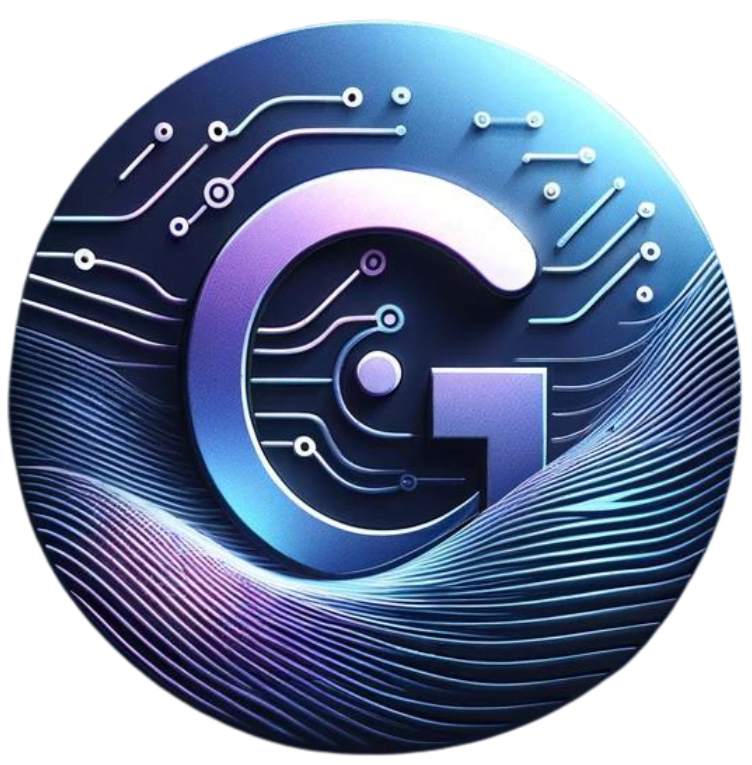How to Win Attention with Story Formats That Convert

(The Post-AI Marketing Shift series)
Why “Storytelling Formats That Convert” Still Win the Feed
AI can churn out endless content, sameness is the new silence. What cuts through isn’t more words. It’s storytelling formats that convert. Narrative shapes hook attention. They hold it long enough to deliver value and then hand off to a clear next step. That’s how we turn scrolls into signals and signals into sales.
From Noise to Narrative
Attention is elastic; it snaps back to whatever looks familiar. Story changes that by adding tension, character, and transformation. When you structure content into storytelling formats that convert, the brain recognizes a pattern and leans in.
The Conversion Gap AI Can’t Cross Without Story
AI can generate paragraphs. It can’t (by itself) supply meaning—the “why this matters now.” Narrative context bridges that gap, turning information into intention.

The Four Conversion Jobs Inside Storytelling Formats That Convert
Think of every asset as doing four jobs:
1) Hook
Earn the first second with a sharp from → to promise, curiosity gap, or bold claim.
2) Hold
Escalate stakes and momentum. Use open loops, pattern breaks every 7–10 seconds in video, and slide-to-slide tension in carousels.
3) Help
Deliver a genuine “aha”: a template, a reframe, or a shortcut that removes friction.
4) Handoff
Make the next action obvious and low-friction (download, demo, reply, add-to-cart).
Formats That Consistently Win Attention and Convert
Data-Selfies: The “Wrapped” Style Storytelling Formats That Convert
Personalized recap experiences—what I call data-selfies—transform usage data into identity. The modern archetype is Spotify Wrapped. Each December, Spotify turns listening behavior into social-ready cards people want to share. Study the structure: the newsroom hub explains the experience and card mechanics:
- Spotify 2024 Wrapped hub: https://newsroom.spotify.com/2024-wrapped/
- 2024 Wrapped user experience: https://newsroom.spotify.com/2024-12-04/wrapped-user-experience-2024/
Why it converts: It’s inherently personal, visually snackable, and built for bragging rights—perfect for referrals and re-engagement.
How to build your own “Wrapped” style:
- Pick 3–7 meaningful stats (time saved, milestones, streaks).
- Render each stat as a vertical, full-bleed card.
- Add share prompts on each card (“Post yours”).
- Gate the full pack behind email capture if you need lead gen.
- Practical guides worth bookmarking:
- Customer.io’s how-to: https://customer.io/learn/personalization/create-spotify-wrapped-campaign
- Mailmodo’s playbook: https://www.mailmodo.com/guides/spotify-wrapped-example/
Proof the format travels: Even outside music, brands riff on the recap mechanic (e.g., Google Photos’ year recap frequently makes tech press roundups).
Character-Led Serials: Personality-Driven Storytelling Formats That Convert
A recurring character gives your brand a “sitcom engine.” Duolingo’s green owl is the signature example of personality-first, platform-native storytelling that thrives on TikTok humor and serialized bits.
- Strategy breakdown: https://www.rivaliq.com/blog/duolingo-tiktok-marketing-strategy/
- TikTok for Business case: https://ads.tiktok.com/business/en-US/inspiration/duolingo-509
Why it converts: Characters compress trust. Audiences return for the next beat, which lifts recall and lowers click resistance.
Guardrails:
- The character must earn attention (useful, funny, or both).
- Maintain a brand bible and cultural checks (Duolingo localized its “Death of Duo” stunt by market). Useful recaps:
- PR Daily recap: https://www.prdaily.com/duolingo-shares-pr-secrets-of-viral-death-of-duo-campaign/
- Business Insider on localization nuance: https://www.businessinsider.com/duolingo-language-app-not-kill-duo-owl-japan-marketing-2025-2
Micro-Documentaries (90–180s): Short-Form Storytelling Formats That Convert
These are tight, cinematic stories about one customer, one problem, one transformation—perfect for Reels, Shorts, TikTok, and paid social pre-roll.
Live example: Airbnb – “Made Possible by Hosts.” Real photos + authentic voices stitched into short narratives:
- Campaign hub: https://news.airbnb.com/made-possible-by-hosts/
- Extended newsroom explainer: https://news.airbnb.com/made-possible-by-hosts-2/
Where to deploy: Product pages (above the fold), retargeting ads, trade-show loops, and as a sales-deck opener.
Case-Story Pages (Not Lab-Report Case Studies)
Most case studies bury the lead and read like compliance docs. Turn them into case-stories with beats people want to read.
Structure you can steal:
- Cold open (pain snapshot)
- What failed before (and why)
- Turning point (your unique insight)
- The build (screens, steps, evidence)
- Results in human terms
- What surprised us
- How to copy this (mini-playbook)
Reference library + how-to:
- Mailchimp Success Stories: https://mailchimp.com/case-studies/
- Mailchimp’s case-study guide: https://mailchimp.com/resources/how-to-create-a-case-study/
Why this converts: It mirrors the buyer’s internal narrative. This includes fear, doubt, proof, and path. These elements make the CTA feel like the obvious next step.
News-Tok Explain-ers: Real-Time Storytelling Formats That Convert
Utility + personality + rhythm. The Washington Post built a TikTok “multiverse” using editors as recurring characters who translate headlines for vertical video.
- Strategy interview: https://www.milkkarten.net/p/inside-the-washington-post-tiktok
- Creator profile (Dave Jorgenson): https://www.washingtonpost.com/people/dave-jorgenson/
Why it converts: Familiar faces, predictable beats, topical hooks—ideal for top-of-funnel awareness and retargetable attention pools.
Social Carousels as Storyboards
Treat each slide as a beat, not a paragraph. A 7-card storytelling format that converts:
- Hook claim
- Stakes
- Myth to bust
- Plan in 3 steps
- Proof (chart/screenshot)
- Objection + answer
- Handoff (CTA)
Tip: Design for thumb-speed—big type, tight crops, visual pattern breaks.
Tutorials as Transformation Arcs
People click “how-to,” but they share transformation. Structure every tutorial in three parts. Start with Before to show the initial pain. Then move to After to present the solved state. Go Beyond to reveal benefits users don’t expect, such as time saved, confidence, and second-order wins.
Picking the Right Storytelling Formats That Convert (By Funnel Stage)
Awareness
Character serials, News-Tok explainers, micro-docs
Consideration
Carousels, case-story pages, recap emails
Decision
Tutorials with side-by-side comparisons, testimonial shorts, 1-pagers
Loyalty
Data-selfies/Wrapped recaps, community spotlights, progress stories
Channel × Intent Matrix for Storytelling Formats That Convert
| Channel | Best-Fit Storytelling Formats That Convert | Primary Intent |
|---|---|---|
| TikTok/Reels/Shorts | Character serials, micro-docs, explainers | Awareness & recall |
| Carousels, case-stories, micro-docs | Consideration & pipeline | |
| Case-story highlights, tutorials | Nurture & activation | |
| Web | Case-story hub, tutorial library | Decision support |
| X/Threads | News snippets, “myth to bust” threads | Awareness & debate |
| In-app | Data-selfies, progress stories | Loyalty & referrals |
The 9-Beat Conversion Story Spine
Use this spine to script storytelling formats that convert across video, carousels, email, and landing pages:
- Cold open (pain snapshot)
- Context (why now)
- Character (who’s on the journey)
- Goal (clear win state)
- Obstacle (what blocks progress)
- Insight (reframe that unlocks movement)
- Build (3 concrete steps or scenes)
- Proof (result that matters to humans)
- Handoff (one next step)
Production Playbook: Shipping Storytelling Formats That Convert (Lean Team Edition)
Prompts by Format
- Data-Selfie: “What 5 stats would make our user text a friend?” (Use the guides from Customer.io and Mailmodo above.)
- Character Serial: “If our brand were a helpful neighbor, what would they do this week?” (Review Duolingo’s TikTok approach.)
- Micro-Doc: “Whose life changed because of our product in a single, specific moment?” (Rewatch Airbnb’s mini-docs.)
- Case-Story: “What failed before us, and what did we do differently?” (Borrow Mailchimp’s structure.)
- News-Tok: “What’s today’s confusing headline, translated for a smart 15-year-old?”
- Carousel: “What 7 beats make this idea inevitable?”
- Tutorial: “What’s the shortest path from stuck → solved?”
Asset Checklist & Run-of-Show
- Pre-pro: one-page brief, beat outline, shot list, casting/UGC ask, location, rights.
- Production: 20–30 min A-roll, B-roll of “work scenes,” mic’d audio, vertical framing, alt thumbnails.
- Post: 3 cuts (15s, 30–60s, 120–180s), captions, hook A/B tests, end-card CTA variants.
- Distribution: native upload per channel, UTM-tagged links, creator whitelisting if paid.
- Repurposing: clip into GIFs, quote cards, blog embeds, sales snippets.
Measurement: Proving Your Storytelling Formats Convert
Attention Metrics
- Scroll-stop rate (3-second views ÷ impressions)
- Slide-2 conversion (carousel drop-off)
- Hook retention (10-second hold)
Conversion Metrics
- Assisted conversions from story-led pages
- Demo clicks per 1,000 views (DPMV)
- Reply rate on story-led nurture vs. generic nurture
UTM + Experiment Design
- Use utm_content to tag format + hook (e.g.,
wrapped_cards_v1vswrapped_cards_v2). - Run split-landing tests: story-led page vs. feature grid.
- Tie assets to lead source and campaign in the CRM, not just channel.
Common Mistakes (and Quick Fixes)
- Facts without feeling → Add a human micro-moment: a quote, a text screenshot, a 3-second reaction shot.
- Endless setup → Start at the turning point, then rewind with one line.
- CTA whiplash → One outcome per asset; everything points there.
- Over-polished short-form → Shoot “clean-casual.” The platform is the aesthetic.
- Case studies that bury the lead → Put the human result in the headline, then show how.
30-Day Plan: Shipping Storytelling Formats That Convert
Week 1
- Mon: Carousel—“7 myths costing you conversions” (7-beat storyboard).
- Wed: Micro-doc—120s customer transformation.
- Fri: News-Tok explainer on a fresh headline + why it matters to your buyer.
Week 2
- Tue: Case-story page + email featuring the human-outcome headline.
- Thu: Tutorial (Before → After → Beyond) + downloadable checklist.
Week 3
- Mon/Wed/Fri: Character serial (3 parts) with open loops and replies in comments.
- Thu: LinkedIn carousel recapping the serial + CTA to the case-story.
Week 4
- Tue: Mini “Wrapped”—mid-quarter user progress cards + share prompt.
- Fri: Roundup email: top 3 “aha” clips + calendar link.
Keep 70% evergreen, 30% reactive. Rinse monthly.
Conclusion: Why Storytelling Formats That Convert Become Moats
In a post-AI world, more content won’t save you—story will. Build around storytelling formats that convert—data-selfies, character serials, micro-docs, case-stories, News-Tok explainers—and you’ll do more than earn attention. You’ll turn attention into action with proof, path, and momentum.
FAQs
1) What’s the fastest format to ship this week?
A 7-slide carousel. It’s writing-heavy, design-light, and repurposes into email and Shorts.
2) How long should micro-docs be for completion?
Aim for 90–150 seconds with beats every 7–10 seconds and a strong cold open.
3) Can a “boring” brand use character serials?
Yes. Make the problem the character. Personify the pain and defeat it episodically.
4) How do I track ROI on story content?
Tag by format + hook in utm_content, monitor assisted conversions, and compare story-led landing pages against control pages.
5) Can I copy “Wrapped” without tons of data?
Start with simple milestones (time saved, tasks completed). Render 3–5 shareable cards and consider email-gating the full pack. See Customer.io and Mailmodo guides above.
Subscribe for marketing and tech tips

